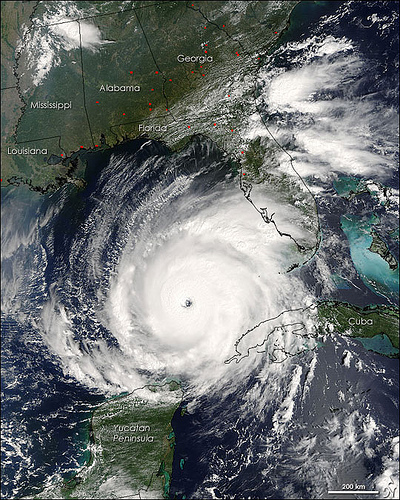It looks like we can expect an above average Atlantic hurricane season according to the most recent forecasts by the National Oceanic and Atmospheric Administration (NOAA) and the Colorado State University Tropical Meteorology Project (CSUTMP).
Last year we dodged the bullet and no major hurricane made a U.S. landfall (as was the case in the previous four years) even though last year’s hurricane season was one of the busiest on record with 19 named storms, with 12 strengthening into hurricanes.
This year NOAA predicts between 12 to 18 named storms of which six to 10 are likely to be hurricanes, and three to six of those could become major hurricanes, ranging from Category 3-5.
The factors indicating an above average season (11 named storms and six hurricanes, of which 2 are major):
- In the regions of the Atlantic where storms often develop, sea surface temperatures are up to two degrees Fahrenheit warmer than average.
- La Nina, is likely to still have an impact.
- The last sixteen years, ocean and atmospheric conditions have been conducive to more active Atlantic hurricane seasons.
Last month CSUTMP forecast an above average season of 16 named storms of which 9 are expected to turn into hurricanes, with five developing into major hurricanes with sustained winds of 111 mph or greater.
Their probabilities for a major hurricane making landfall in the U.S. are:
- A 72 percent chance that at least one major hurricane will make landfall on the U.S. coastline (the long-term average probability is 52 percent).
- A 47 percent chance that a major hurricane will make landfall on the Gulf Coast from the Florida Panhandle west to Brownsville, Texas (the long-term average is 30 percent).
- A 48 percent chance that a major hurricane will make landfall on the East Coast, including the Florida Peninsula (the long-term average is 31 percent).
Forecast updates are expected June 1 and Aug. 3 after which they should know better if La Nina affects are still likely to have an impact and if an El Nino is developing.



